AI Can Do A Lot Of Good, But This Is Extremely Unethical At Best. Get Permission, Or Stop.

AI can do a lot of good, but this is extremely unethical at best. Get permission, or stop.
More Posts from Malificandy and Others
if any of y’all were wondering what leftist antisemitism can look like, here’s an example:


here’s the rhetoric they’re blatantly borrowing from:

so yeah, there absolutely is antisemitism that is unique to leftism and if you try to argue there isn’t that is probably because you agree with it!
also before you try to whine abt this in the notes, i am a leftist jew. cry to someone else.
“The opposition is nearing single digits at this point and establishment and moderate Republicans are proving just how meaningless those two descriptors have always been when applied to them. They are proving that the GOP ethos is absolutely clear: party—the MAGA party—over country. The assumption is that Jordan is promising them something, and that he will be able to deliver that something better than anyone else could. Yes, the same Jordan that former Speaker John Boehner called a “legislative terrorist.” The same Jordan who tried to overturn the 2020 election. The one who was on the phone with Donald Trump the morning of Jan. 6, 2021—mere hours before the MAGA mob attacked the Capitol, invaded their chamber, and threatened every member of Congress’s health and lives.”
—
‘Moderate’ House Republicans folding like cheap tents for insurrectionist Jordan’s speaker bid
There is no such thing as a “moderate” Republican.
For the Nonnie who asked me to share some of the response to the performative "all eyes on Rafah" campaign, I hope it's okay if I add to the two images you sent me, and turn to the people sharing that AI generated image...
If all eyes are on Rafah, are you seeing Hamas' abuse, torture and even killing of its own Gazan civilians?
("Resistance is justified when people are occupied!" Cool cool, but what kind of a "resistance" attacks its own people?)
If all eyes are on Rafah, where were your eyes on Oct 7?
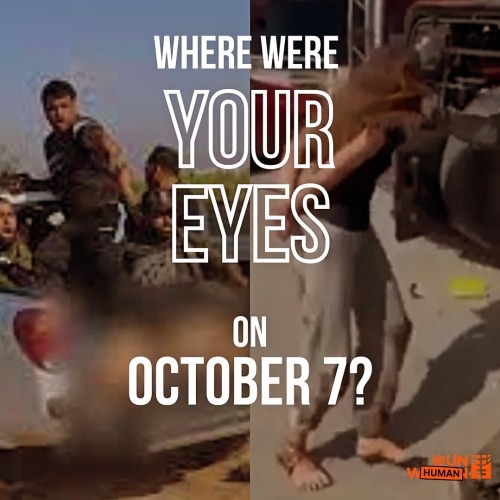
If all eyes are on Rafah, 'coz Gazan kids being burned alive (by Hamas, even though Israel got falsely blamed for it) is so unacceptable, then where were your eyes when our kids were burned alive by Hamas? In the pic: 2 years old Omer Siman Tov, who was deliberately burned alive by Hamas terrorists together with his entire family, his parents and two older sisters, in their own home.

If all eyes are on Rafah, do you see Kfir Bibas, kidnapped at the age of 9 months together with both his parents and his 4 years old brother Ariel? Kfir is the youngest hostage in the world ever (second youngest ever was Charles Augustus Lindbergh Jr., who was kidnapped at 20 months old in 1932).
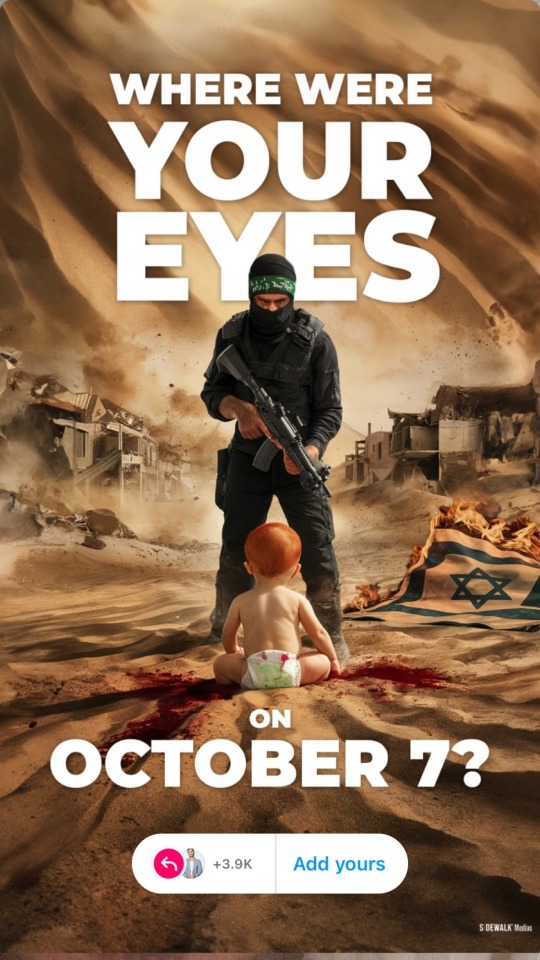


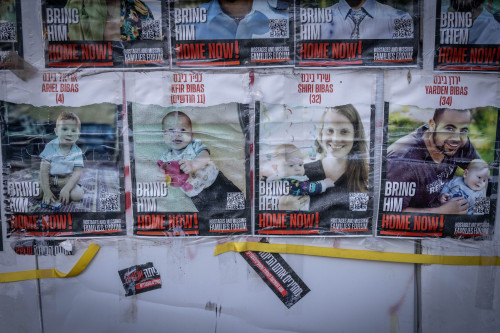
If all eyes are on Rafah, are you seeing our other molested hostages?



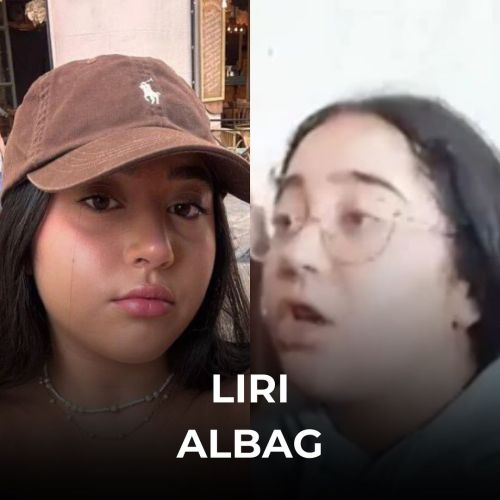


If all eyes are on Rafah, are you seeing Hamas' rocket launchers which continuously operate and target our civilians from there? (note the dates vary from Dec 7, 2023 to May 26, 2024)




If all eyes are on Rafah, where the IDF did strike and kill two senior Hamas leaders, Yassin Rabia and Khaled Najjar, near (but not at) a shelter tent camp, are you seeing that Hamas deliberately chooses to risk its own civilians by having its leaders carry out consultation meetings so close to regular people?


If all eyes are on Rafah, why did you see the rescue of two of our elderly hostages (and the killing of the terrorists who tried to prevent the success of this operation) as a massacre? And why did you claim this was Israel invading Rafah back on Feb 12 already, when the actual ground operation in that city only started in May?
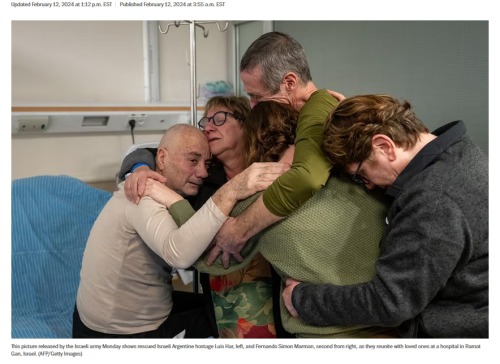
If all eyes are on Rafah because you care about the Palestinians so much, where were your eyes when Palestinians were endangered and killed by fellow Arabs?

If all eyes are on Rafah, where almost a million people have been evacuated by May 20 already, then whose eyes are on Sudan, Congo, Yemen, Syria, Iran, Ukraine among other places, where the murders of hundreds of thousands in each (and altogether, millions) is being carried on unchallenged? Where are the campaigns for the people whose slaughter you can't weaponize against the Jewish state?



If you shared that graphic, but didn't do anything about any of the other things listed in this post, you don't actually care. You just want to seem as if you do.

(for all of my updates and ask replies regarding Israel, click here)
pro-AI in the sense of "they taught a bread scanning computer to recognize cancer cells" etc etc
against AI in the sense of "we stole artwork from hundreds to thousands of artists, didn't credit them and didn't financially compensate them"

(via zu2ym6d86r0a1.jpg (JPEG Image, 1132 × 992 pixels))

"Lawrence it's the fucking Taliban" gives similar vibes to "Harold they're lesbians"
I'm an American national married to a German citizen and living in southwestern Germany. I am also a Jew who is the grandchild of four Holocaust survivors. I work for a local school as a teacher and afterschool helper.
In both the town I live in and the town I work in, there are remnants of Jewish life from before the Holocaust, but it is highly likely that I am the only Jew to set foot in either town in the present day.
Tomorrow is October 7th, 2024.
So what am I doing?
Tomorrow, I am bringing a few hundred honeycake muffins to work. They were made using my grandmother's recipe. I will be sharing them with my students and the rest of the school, for a sweet new year for them.
A recipe that the Nazis did their best to wipe out...
being shared by a Jewish teacher in a German school...
on the anniversary of the largest single massacre of Jews since the Holocaust.
Because we Are Still Here, and we will dance again. We shall share food, and kindness, and traditions, again.
Am Yisrael Chai

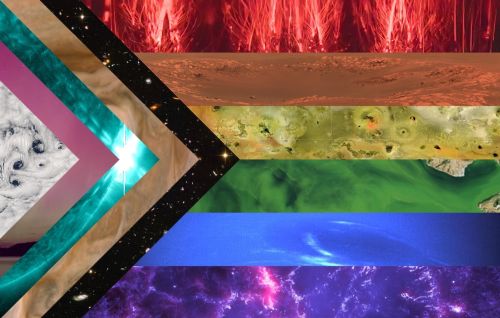
Above image is a pride flag with every color band represented by a NASA image. White is Earth clouds, pink is aurora, blue is the Sun in a specific wavelength, brown is Jupiter clouds, black is the Hubble deep field, red is the top of sprites, orange is a Mars crater, yellow is the surface of Io, green is a lake with algae, blue is Neptune, and purple is the Crab Nebula in a specific wavelength.
Words for Skin Tone | How to Describe Skin Color
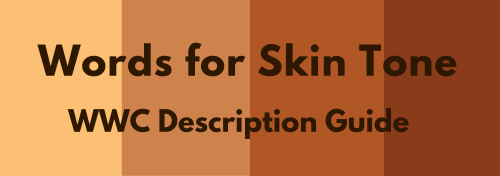
We discussed the issues describing People of Color by means of food in Part I of this guide, which brought rise to even more questions, mostly along the lines of “So, if food’s not an option, what can I use?” Well, I was just getting to that!
This final portion focuses on describing skin tone, with photo and passage examples provided throughout. I hope to cover everything from the use of straight-forward description to the more creatively-inclined, keeping in mind the questions we’ve received on this topic.
Standard Description
Basic Colors

Pictured above: Black, Brown, Beige, White, Pink.
“She had brown skin.”
This is a perfectly fine description that, while not providing the most detail, works well and will never become cliché.
Describing characters’ skin as simply brown or beige works on its own, though it’s not particularly telling just from the range in brown alone.
Complex Colors
These are more rarely used words that actually “mean” their color. Some of these have multiple meanings, so you’ll want to look into those to determine what other associations a word might have.

Pictured above: Umber, Sepia, Ochre, Russet, Terra-cotta, Gold, Tawny, Taupe, Khaki, Fawn.
Complex colors work well alone, though often pair well with a basic color in regards to narrowing down shade/tone.
For example: Golden brown, russet brown, tawny beige…
As some of these are on the “rare” side, sliding in a definition of the word within the sentence itself may help readers who are unfamiliar with the term visualize the color without seeking a dictionary.
“He was tall and slim, his skin a russet, reddish-brown.”
Comparisons to familiar colors or visuals are also helpful:
“His skin was an ochre color, much like the mellow-brown light that bathed the forest.”
Modifiers
Modifiers, often adjectives, make partial changes to a word.The following words are descriptors in reference to skin tone.
Dark - Deep - Rich - Cool
Warm - Medium - Tan
Fair - Light - Pale
Rich Black, Dark brown, Warm beige, Pale pink…
If you’re looking to get more specific than “brown,” modifiers narrow down shade further.
Keep in mind that these modifiers are not exactly colors.
As an already brown-skinned person, I get tan from a lot of sun and resultingly become a darker, deeper brown. I turn a pale, more yellow-brown in the winter.
While best used in combination with a color, I suppose words like “tan” “fair” and “light” do work alone; just note that tan is less likely to be taken for “naturally tan” and much more likely a tanned White person.
Calling someone “dark” as description on its own is offensive to some and also ambiguous. (See: Describing Skin as Dark)
Undertones
Undertones are the colors beneath the skin, seeing as skin isn’t just one even color but has more subdued tones within the dominating palette.
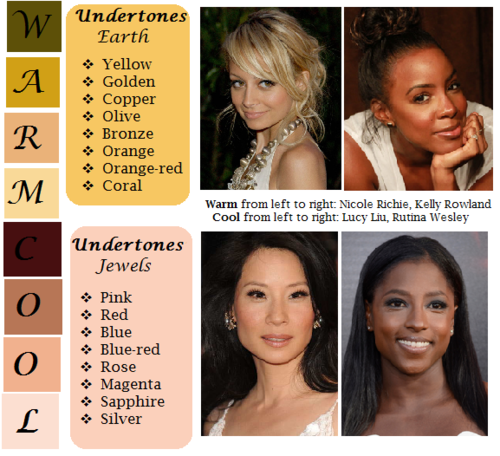
pictured above: warm / earth undertones: yellow, golden, copper, olive, bronze, orange, orange-red, coral | cool / jewel undertones: pink, red, blue, blue-red, rose, magenta, sapphire, silver.
Mentioning the undertones within a character’s skin is an even more precise way to denote skin tone.
As shown, there’s a difference between say, brown skin with warm orange-red undertones (Kelly Rowland) and brown skin with cool, jewel undertones (Rutina Wesley).
“A dazzling smile revealed the bronze glow at her cheeks.”
“He always looked as if he’d ran a mile, a constant tinge of pink under his tawny skin.”
Standard Description Passage
“Farah’s skin, always fawn, had burned and freckled under the summer’s sun. Even at the cusp of autumn, an uneven tan clung to her skin like burrs. So unlike the smooth, red-brown ochre of her mother, which the sun had richened to a blessing.”
-From my story “Where Summer Ends” featured in Strange Little Girls
Here the state of skin also gives insight on character.
Note my use of “fawn” in regards to multiple meaning and association. While fawn is a color, it’s also a small, timid deer, which describes this very traumatized character of mine perfectly.
Though I use standard descriptions of skin tone more in my writing, at the same time I’m no stranger to creative descriptions, and do enjoy the occasional artsy detail of a character.
Creative Description
Whether compared to night-cast rivers or day’s first light…I actually enjoy seeing Characters of Colors dressed in artful detail.
I’ve read loads of descriptions in my day of white characters and their “smooth rose-tinged ivory skin”, while the PoC, if there, are reduced to something from a candy bowl or a Starbucks drink, so to actually read of PoC described in lavish detail can be somewhat of a treat.
Still, be mindful when you get creative with your character descriptions. Too many frills can become purple-prose-like, so do what feels right for your writing when and where. Not every character or scene warrants a creative description, either. Especially if they’re not even a secondary character.
Using a combination of color descriptions from standard to creative is probably a better method than straight creative. But again, do what’s good for your tale.
Natural Settings - Sky

Pictured above: Harvest Moon -Twilight, Fall/Autumn Leaves, Clay, Desert/Sahara, Sunlight - Sunrise - Sunset - Afterglow - Dawn- Day- Daybreak, Field - Prairie - Wheat, Mountain/Cliff, Beach/Sand/Straw/Hay.
Now before you run off to compare your heroine’s skin to the harvest moon or a cliff side, think about the associations to your words.
When I think cliff, I think of jagged, perilous, rough. I hear sand and picture grainy, yet smooth. Calm. mellow.
So consider your character and what you see fit to compare them to.
Also consider whose perspective you’re describing them from. Someone describing a person they revere or admire may have a more pleasant, loftier description than someone who can’t stand the person.
“Her face was like the fire-gold glow of dawn, lifting my gaze, drawing me in.”
“She had a sandy complexion, smooth and tawny.”
Even creative descriptions tend to draw help from your standard words.
Flowers
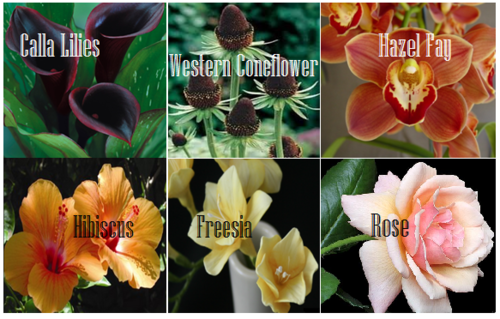
Pictured above: Calla lilies, Western Coneflower, Hazel Fay, Hibiscus, Freesia, Rose
It was a bit difficult to find flowers to my liking that didn’t have a 20 character name or wasn’t called something like “chocolate silk” so these are the finalists.
You’ll definitely want to avoid purple-prose here.
Also be aware of flowers that most might’ve never heard of. Roses are easy, as most know the look and coloring(s) of this plant. But Western coneflowers? Calla lilies? Maybe not so much.
“He entered the cottage in a huff, cheeks a blushing brown like the flowers Nana planted right under my window. Hazel Fay she called them, was it?”
Assorted Plants & Nature

Pictured above: Cattails, Seashell, Driftwood, Pinecone, Acorn, Amber
These ones are kinda odd. Perhaps because I’ve never seen these in comparison to skin tone, With the exception of amber.
At least they’re common enough that most may have an idea what you’re talking about at the mention of “pinecone."
I suggest reading out your sentences aloud to get a better feel of how it’ll sounds.
"Auburn hair swept past pointed ears, set around a face like an acorn both in shape and shade.”
I pictured some tree-dwelling being or person from a fantasy world in this example, which makes the comparison more appropriate.
I don’t suggest using a comparison just “cuz you can” but actually being thoughtful about what you’re comparing your character to and how it applies to your character and/or setting.
Wood

Pictured above: Mahogany, Walnut, Chestnut, Golden Oak, Ash
Wood can be an iffy description for skin tone. Not only due to several of them having “foody” terminology within their names, but again, associations.
Some people would prefer not to compare/be compared to wood at all, so get opinions, try it aloud, and make sure it’s appropriate to the character if you do use it.
“The old warlock’s skin was a deep shade of mahogany, his stare serious and firm as it held mine.”
Metals

Pictured above: Platinum, Copper, Brass, Gold, Bronze
Copper skin, brass-colored skin, golden skin…
I’ve even heard variations of these used before by comparison to an object of the same properties/coloring, such as penny for copper.
These also work well with modifiers.
“The dress of fine white silks popped against the deep bronze of her skin.”
Gemstones - Minerals
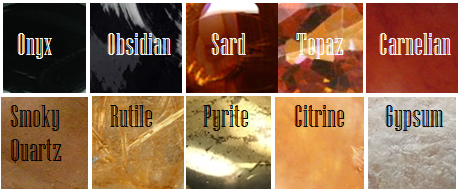
Pictured above: Onyx, Obsidian, Sard, Topaz, Carnelian, Smoky Quartz, Rutile, Pyrite, Citrine, Gypsum
These are trickier to use. As with some complex colors, the writer will have to get us to understand what most of these look like.
If you use these, or any more rare description, consider if it actually “fits” the book or scene.
Even if you’re able to get us to picture what “rutile” looks like, why are you using this description as opposed to something else? Have that answer for yourself.
“His skin reminded her of the topaz ring her father wore at his finger, a gleaming stone of brown, mellow facades.”
Physical Description
Physical character description can be more than skin tone.
Show us hair, eyes, noses, mouth, hands…body posture, body shape, skin texture… though not necessarily all of those nor at once.
Describing features also helps indicate race, especially if your character has some traits common within the race they are, such as afro hair to a Black character.
How comprehensive you decide to get is up to you. I wouldn’t overdo it and get specific to every mole and birthmark. Noting defining characteristics is good, though, like slightly spaced front teeth, curls that stay flopping in their face, hands freckled with sunspots…
General Tips
Indicate Race Early: I suggest indicators of race be made at the earliest convenience within the writing, with more hints threaded throughout here and there.
Get Creative On Your Own: Obviously, I couldn’t cover every proper color or comparison in which has been “approved” to use for your characters’ skin color, so it’s up to you to use discretion when seeking other ways and shades to describe skin tone.
Skin Color May Not Be Enough: Describing skin tone isn’t always enough to indicate someone’s ethnicity. As timeless cases with readers equating brown to “dark white” or something, more indicators of race may be needed.
Describe White characters and PoC Alike: You should describe the race and/or skin tone of your white characters just as you do your Characters of Color. If you don’t, you risk implying that White is the default human being and PoC are the “Other”).
PSA: Don’t use “Colored.” Based on some asks we’ve received using this word, I’d like to say that unless you or your character is a racist grandmama from the 1960s, do not call People of Color “colored” please.
Not Sure Where to Start? You really can’t go wrong using basic colors for your skin descriptions. It’s actually what many people prefer and works best for most writing. Personally, I tend to describe my characters using a combo of basic colors + modifiers, with mentions of undertones at times. I do like to veer into more creative descriptions on occasion.
Want some alternatives to “skin” or “skin color”? Try: Appearance, blend, blush, cast, coloring, complexion, flush, glow, hue, overtone, palette, pigmentation, rinse, shade, sheen, spectrum, tinge, tint, tone, undertone, value, wash.
Skin Tone Resources
List of Color Names
The Color Thesaurus
Skin Undertone & Color Matching
Tips and Words on Describing Skin
Photos: Undertones Described (Modifiers included)
Online Thesaurus (try colors, such as “red” & “brown”)
Don’t Call me Pastries: Creative Skin Tones w/ pics I
Writing & Description Guides
WWC Featured Description Posts
WWC Guide: Words to Describe Hair
Writing with Color: Description & Skin Color Tags
7 Offensive Mistakes Well-intentioned Writers Make
I tried to be as comprehensive as possible with this guide, but if you have a question regarding describing skin color that hasn’t been answered within part I or II of this guide, or have more questions after reading this post, feel free to ask!
~ Mod Colette

Hex Maniac | Coffee Addict | Elder Millennial
192 posts

